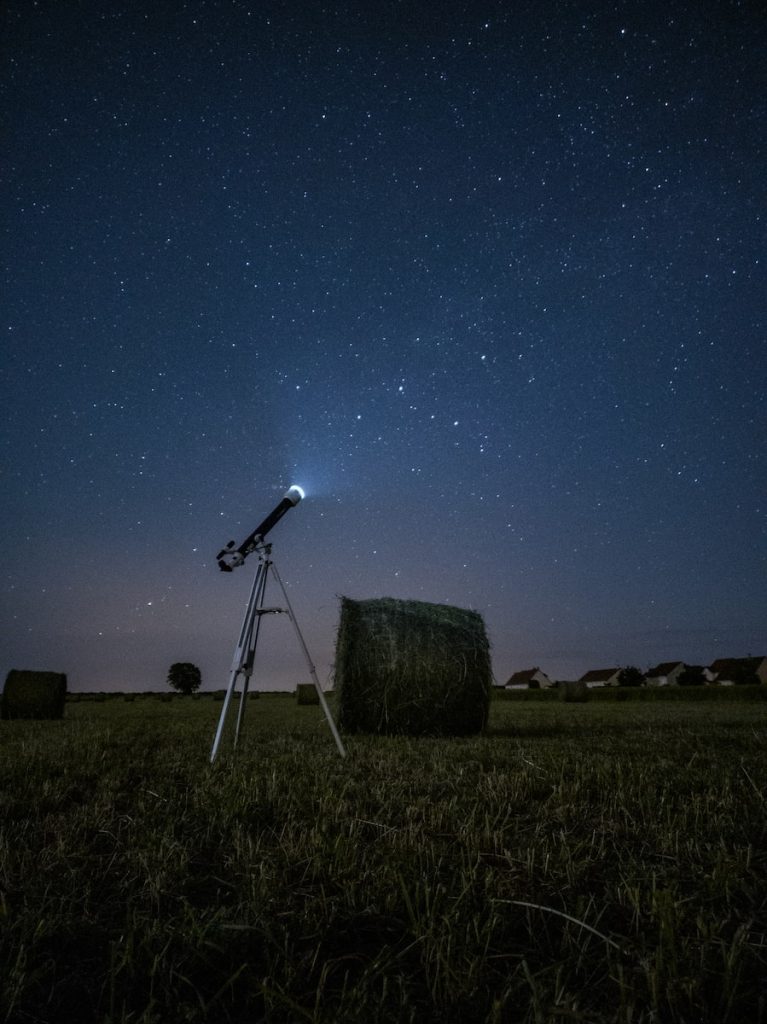Have you ever found yourself staring up at the night sky, mesmerized by the twinkling stars above? For centuries, humans have been captivated by the beauty and mystery of the cosmos. Whether you’re an amateur astronomer or simply enjoy the wonder of the night sky, star gazing can be a truly enchanting experience. But how can you make the most of your time under the stars? This blog will share tips and tricks for enjoying the night sky, from finding the best viewing locations to identifying constellations and planets. Whether you’re planning a romantic evening with a loved one or simply looking to indulge your sense of wonder, these tips will help you make the most of your star-gazing adventures. So please sit back, relax, and let’s explore the majesty of the night sky together!
What is Star Gazing?
Star-gazing, also known as amateur astronomy, is the activity of observing celestial objects in the night sky. It involves using the naked eye, telescopes, binoculars, or other optical devices to study the cosmos’ stars, planets, galaxies, and other objects.
Humans have been fascinated by the night sky for thousands of years, with many ancient cultures developing complex astronomical systems to track the movements of the stars and planets. Today, star-gazing remains a popular hobby and pastime for people of all ages and backgrounds.
Star-gazing can be done almost anywhere, but the best viewing conditions usually involve a dark, clear sky away from city lights. Some people prefer to use specialized equipment such as telescopes to get a closer look at the objects they’re observing, while others simply use their naked eyes to appreciate the beauty of the night sky.
One of the joys of star-gazing is the opportunity to witness rare events like meteor showers, comets, and eclipses. These events can be breathtaking and awe-inspiring, reminding us of the vastness and complexity of the universe.
In addition to being a fun and relaxing hobby, star gazing can also be an educational activity. By learning about the different constellations, planets, and other objects in the night sky, we can better understand our place in the universe.
Overall, star-gazing is a wonderful way to connect with the beauty and mystery of the cosmos. Whether you’re a seasoned astronomer or simply enjoy gazing up at the stars, there’s always something new to discover in the night sky.
Tips for Beginners
If you’re new to star gazing, it can be overwhelming to know where to start. Here are some tips for beginners that will help you get started and enjoy the night sky:
- Find a dark and open location: The first step to successful star-gazing is to find a location away from the city lights. Light pollution can make it difficult to see stars and other celestial objects. Look for a place with an unobstructed view of the sky, such as a park or a rural area.
- Choose the right time: The best time for star-gazing is on a clear and moonless night. Check the weather forecast and lunar calendar before heading out. You can also use astronomy apps or websites to find out when and where celestial events will occur.
- Use a star chart: A star chart or a planisphere is a handy tool that helps you identify the stars and constellations in the sky. It’s a night sky map showing celestial objects’ position at a specific time and location.
- Start with the naked eye: You don’t need a telescope to enjoy star gazing. Start by using your naked eye to appreciate the beauty of the night sky. Look for bright stars and recognizable constellations like the Big Dipper, Orion, and Cassiopeia.
- Use binoculars: If you want to get a closer look at the stars, consider using a pair of binoculars. They’re more portable than telescopes and can be used for various celestial objects like star clusters, the moon, and planets.
- Join an astronomy club: If you’re serious about star-gazing, consider joining an astronomy club. You’ll get to meet like-minded people who can help you learn more about astronomy and share their tips and experiences.
- Be patient: Remember that star gazing requires patience and persistence. Don’t be discouraged if you don’t see anything on your first attempt. Keep practicing and learning, and you’ll soon discover the wonders of the night sky.
Overall, star-gazing can be a rewarding and enriching hobby for beginners and experienced astronomers alike. With these tips, you’ll be on your way to discovering the beauty and mystery of the cosmos.
Tools and Equipment Needed

While star-gazing can be enjoyed with the naked eye, using specialized tools and equipment can enhance the experience and help you see celestial objects more clearly. Here are some of the tools and equipment that are commonly used for star-gazing:
- Telescope: A telescope is an essential tool for serious star gazing. It uses a lens or a mirror to gather and focus light from distant celestial objects, making them appear closer and clearer. There are many different types of telescopes, from small portable ones to large and complex ones used by professional astronomers.
- Binoculars: Binoculars are a great alternative to telescopes for beginner and casual star-gazers. They are lightweight, portable, and easy to use. They can be used to observe the moon, planets, star clusters, and even some deep-sky objects like nebulae and galaxies.
- Tripod: A tripod is a three-legged stand that holds telescopes or binoculars steady. It’s an essential tool for stable and comfortable viewing. Tripods come in various sizes and materials, from lightweight aluminum to sturdy carbon fiber.
- Planisphere or star chart: A planisphere or star chart is a map of the night sky that shows the position of celestial objects at a specific time and location. It helps you identify stars and constellations, making it easier to navigate the night sky.
- Red light flashlight: A red light flashlight is a useful tool for star gazing as it allows you to see your star chart or equipment without ruining your night vision. Red light is less harsh than white light and won’t affect your eyes’ ability to adjust to the darkness.
- Astronomy apps: Many astronomy apps are available for smartphones and tablets that can help you navigate the night sky. They can provide information about celestial objects, their position, and movement, and even help you locate them in the sky.
Overall, while not all of these tools and equipment are necessary, they can enhance the star-gazing experience and help you see celestial objects more clearly. The right tools and equipment can make all the difference in making star gazing a fun and rewarding experience.
Best Locations for Viewing
Choosing the right location is crucial for successful star gazing. The ideal location for viewing stars is minimal light pollution, a clear sky view, and comfortable conditions. Here are some of the best locations for viewing stars:
- National parks: National parks are often located in remote areas with little light pollution, making them ideal for star gazing. Many national parks also offer ranger-led programs and astronomy events.
- Beaches: Beaches are great for star gazing because they usually have a clear view of the horizon, which makes it easier to see the stars. You can also enjoy the sound of the ocean waves while star gazing.
- Mountains: Mountains are great for star gazing because they offer high elevation and clear skies. The air at high elevations is thinner, making it easier to see the stars.
- Rural areas: Rural areas away from cities and towns are excellent for star gazing as they have minimal light pollution. Look for open fields or hills with an unobstructed view of the sky.
- Observatories: Observatories are specifically designed for astronomy and are usually located in remote areas with minimal light pollution. Some observatories also offer public viewing nights.
- Campgrounds: Campgrounds can be great for star gazing as they usually have clear skies in rural areas. Many campgrounds also offer ranger-led astronomy programs and events.
When choosing a location for star-gazing, it’s important to check the weather forecast and avoid areas with cloudy or overcast skies. Additionally, always make sure to take safety precautions, such as bringing warm clothing, food, and water and letting someone know where you’re going and when you plan to return.
Conclusion
Star gazing is a fascinating and rewarding hobby that allows us to connect with the vastness and beauty of the universe. With a few simple tips and tricks, anyone can enjoy the night sky, from beginners using the naked eye to serious astronomers using specialized equipment. From choosing the right location to understanding the best time to observe celestial objects, there are many things to consider when star gazing. Following the tips outlined in this article can enhance your star-gazing experience and make the most of your time under the stars. Whether you’re looking to explore the night sky on your own or with friends and family, star gazing is a wonderful way to appreciate the wonders of the universe and gain a deeper understanding of our place in it.






























